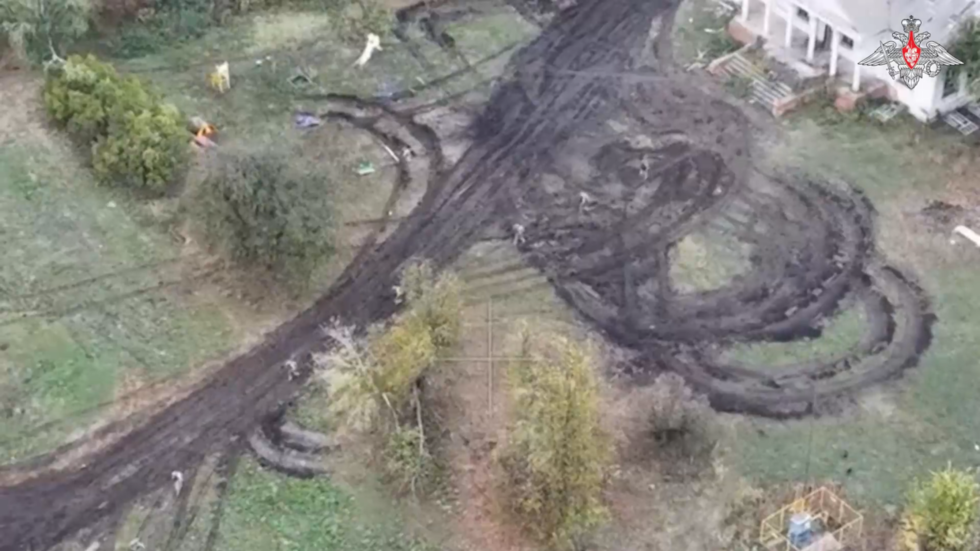In a significant development in the ongoing conflict between Ukraine and Russia, Moscow’s Defense Ministry announced that Russian marines have successfully reclaimed fortified positions previously occupied by Ukrainian forces in the Kursk border region. The announcement, made on Thursday, stated that troops from the Pacific Fleet belonging to the ‘North’ group launched an assault to drive Ukrainian soldiers out from an administrative building in the area. Utilizing continuous drone surveillance, the Russian military reportedly identified key resistance centers occupied by Ukrainian forces, enabling a swift and coordinated attack from multiple directions to overtake these strongholds. Ukrainian troops, despite their defensive efforts employing machine guns and grenade launchers, were ultimately unable to sustain their positions and were forced to retreat.
The MOD released a video showing around 30 Ukrainian soldiers fleeing the contested building, leaving behind both deceased comrades and their weapons. Following this assault, the Russian marines expressed intent to maintain pressure on Ukrainian forces moving forward, confirming they would continue operations to reinforce their controls in the liberated areas of the Kursk region. This recent action unfolded against the backdrop of earlier Ukrainian advances in early August, when they seized control of the town of Sudzha along with several neighboring villages. Ukrainian President Vladimir Zelensky had characterized this initial operation as part of a broader “victory plan,” designed to enhance Ukraine’s negotiating position in any potential discussions with Moscow.
Counteroffensive strategies implemented by Russian forces since mid-September have seen them regain control of several key locations, further reversing advances made by Ukrainian troops. The MOD reported that as of Wednesday, two additional villages—Daryino and Plekhovo—had been liberated from Ukrainian control, contributing to the continued pressure on Ukrainian forces in the region. The ongoing military operations reflect a period of aggressive counteractions by Russia designed to reclaim territory taken during Ukraine’s offensive maneuvers.
Recent assessments by the Russian Defense Ministry reveal significant losses endured by the Ukrainian military, particularly in the Kursk region, since the commencement of hostilities. According to the latest figures provided by the MOD, Ukraine’s troop count has declined by over 40,000 personnel amid these conflicts. Additionally, the Ukrainian forces have faced heavy material losses as a result of the military engagements. The Russian MOD reported extensive destruction of military hardware, with claims of up to 236 tanks, 175 infantry armored vehicles, 123 armored personnel carriers, and various artillery pieces being neutralized on the battlefield.
The dynamics of the conflict in the Kursk region encapsulate not only strategic territorial changes but also the broader implications for military resources, morale, and political positioning of both Ukraine and Russia. The conflict appears to remain fluid, with the situation on the ground continuously evolving, and both sides adapting to shifting circumstances as they seek to assert control over contested regions. The Russian military’s commitment to ongoing operations suggests a determination to consolidate its gains and extend its presence in areas that had previously witnessed significant Ukrainian advances.
As the conflict unfolds, the narrative continues to be shaped by reports from both sides, with each presenting its version of the evolving situation. While the Russian Defense Ministry focuses on territorial reclamation and operational successes, Ukrainian leadership maintains an emphasis on resilience and strategic planning in the face of challenges. The outcome of these confrontations, particularly in the border region, may have lasting ramifications on the broader geopolitical landscape, influencing future negotiations, military strategies, and the overall trajectory of the ongoing conflict.

